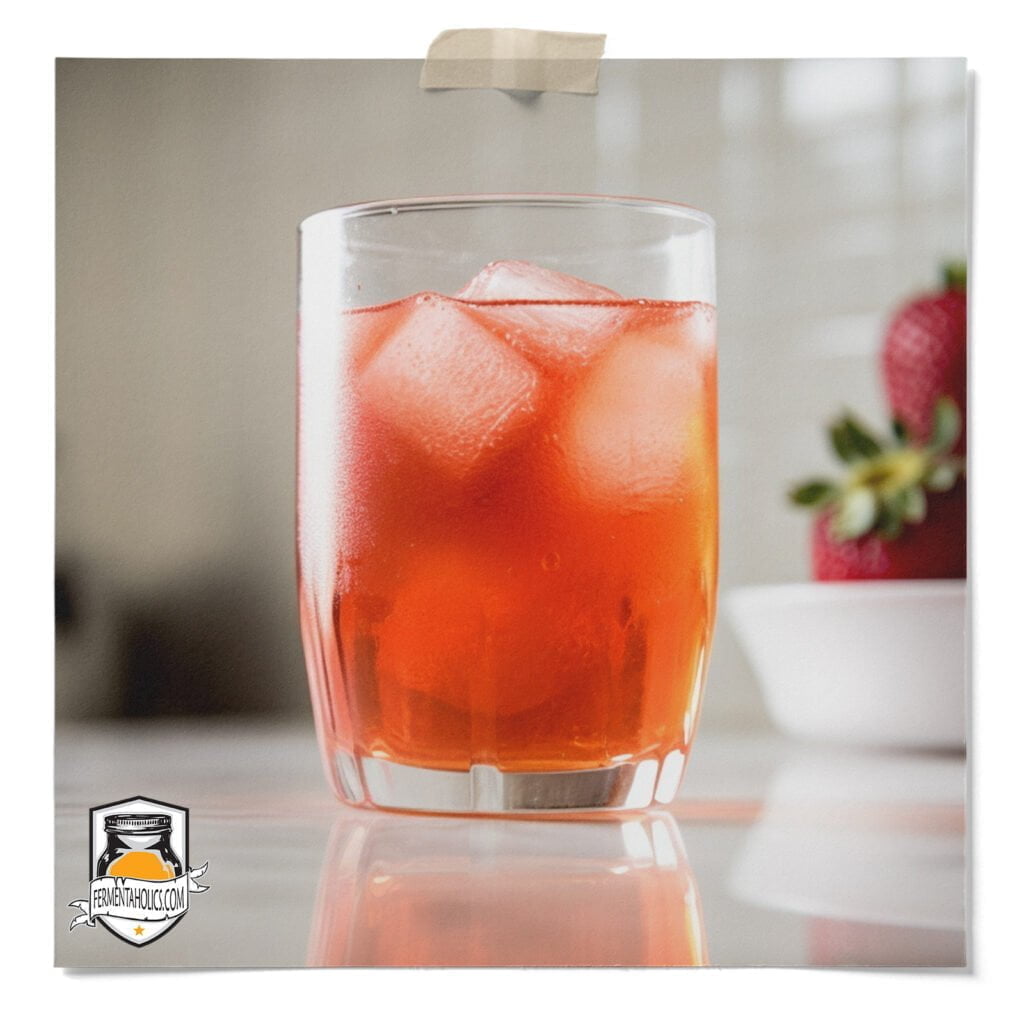
As one of the most popular fruits for children and adults alike, there’s a reason we see strawberry flavored everything, from fruit snacks to sodas to popsicles: they’re delicious! And we wanted to combine that recognizable and beloved flavor with our favorite drink, Kombucha. One thing great about using fruit in secondary fermentation is its inherent amount of sugar. So not only does the fruit impart its flavor on our tasty booch, but it also has the sugar to help produce the carbonation we’ve come to love in our Kombucha. But to add even more carbonation as well as a spicy sweetness to balance out the strawberries, we’ve also added the secondary fermenter’s secret weapon: Candied Ginger. Packed with more flavor and more sugar – aka more of the good stuff. So read on and enjoy this sweet, tangy treat!
It’s important to note that making homemade kombucha is almost always a two-step fermentation process. Brewing kombucha is only a one-step process for those who prefer an unflavored flat kombucha. Otherwise, the steps consist of a primary fermentation and a secondary fermentation.
Primary fermentation is the first step of the kombucha brewing process. This is where your SCOBY transforms regular sweet tea into the tart and slightly sweet kombucha we love. At the end of this stage, you will have finished kombucha, but it will be flat and unflavored. Have you skipped this step? Then check out our guide on how to make kombucha at home, and for jun kombucha, see our post on how to make jun kombucha tea at home. Traditional kombucha is going to yield a bolder brew, while jun kombucha is milder and can be a bit tarter.
Secondary fermentation is the step where you bottle, carbonate, and flavor your kombucha with the addition of sugar and flavors. In this step, the finished kombucha from the primary is mixed with sugar, fruits, or other flavors before bottling it with specialized lids that can hold pressure, like flip-top bottles. The bottled kombucha is then left at room temperature for natural fermentation, where yeast carbonates the kombucha within the sealed bottle. The ideal temperature range for this process is between 75-85°F. The amount of time needed to carbonate within the bottle is highly tied to temperature, which can take anywhere from 2-10 days.
💡Since this recipe is for the secondary fermentation, to make this recipe, you’ll need to have kombucha that has finished the primary fermentation and is ready to bottle.
This recipe makes one 16-fluid-ounce bottle. A 1-gallon batch of kombucha will make seven 16-ounce bottles, so for one gallon, you will need to multiply the ingredients by 7. Before beginning this recipe, you will need to:
16 FL Oz Bottles
10
Minutes2-10 Days
This strawberry ginger kombucha recipe is for one 16 fluid ounce bottle. For a gallon batch, make seven bottles. To scale this recipe to a gallon batch, multiply the ingredients by seven or toggle the serving size up to seven above. Before bottling your kombucha, remove the SCOBY pellicle along with 12-16 ounces of kombucha starter tea from your brew, and reserve for your next batch.
16 Oz Kombucha from a completed primary fermentation.
2-3 pieces Candied Ginger (or 1 tbsp fresh ginger)
1/4 cup Fresh or Frozen Strawberries (thaw first if using frozen)
16 Oz Swing Top Bottles
Measuring Spoons
Blender
Add candied ginger to a clean, empty bottle.
Place strawberries in a blender with 1/2 cup of kombucha, puree until smooth.
Using a funnel, pour the strawberry puree into bottle, ensuring puree and candied ginger blend together.
Top bottle off with kombucha, leaving about 1 to 2 inches of head-space. Tightly place the caps on each bottle.
Keep bottles at room temperature for 2-10 days; it will carbonate faster at higher temperatures and slower when cold.
Burp the bottles as necessary to release excess pressure. This is done by removing the cap to allow built-up pressure to escape then placing the cap back on.
Chill in the refrigerator once you’re happy with the carbonation levels. Based on preference, you can serve as is or strain before drinking.
